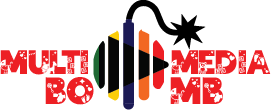Sports
Teaching New Players to Tee Ball Where to Field-Advice to New Coaches
In the mid-1970s in Brisbane, a Tee Ball League based on the American Little League concept was established. Most of the parents, girls and boys involved had never seen the game, let alone played the game. So the few officials who knew the game had to devise advice to give the new coaches to get the league started on a positive note.
Since all the players, initially, were new to the game, the coach needed to spend time teaching each player where to stand and normally where they would throw the ball when they fielded or caught the ball. Below is the advice that was given to new coaches.
Read More:
https://fmtoq.com/read-blog/71179_y2k-meaning-fashion.html
https://fmtoq.com/read-blog/71181_old-sonic-design-movie.html
https://fmtoq.com/read-blog/71182_sonic-old-design-vs-new.html
https://fmtoq.com/read-blog/71183_original-sonic-design-review.html
https://fmtoq.com/read-blog/71184_old-sonic-movie-design.html
1. Basemen must be taught to be fielders first, basemen second. Each baseman should field 2-3 metres inside the base and slightly behind the line between the bases. The second baseman should field on the first base side of second base. The short stop fields on the opposite side of second base half way between the base and the third baseman.
2. If a baseman doesn’t field the ball, he/she must move to the base ready to receive the thrown ball putting his/her foot on the inside corner of the base on a forced play, giving the runner room to step on the base.
3. The baseman should be taught to lean towards the ball as it comes to get the ball early. As well, if it is a wild or bad throw, he/she must leave the base to stop the ball at all costs. A common problem is that the baseman leaves his/her foot on the base and tries to lean sideways to get the ball and then overbalances missing the ball altogether.
4. On a non-forced play, where the runner must be tagged, the baseman puts himself/herself between the base and the runner, moves towards the runner and tags with the glove hand (holding the ball) as low as possible before the runner can reach the base.
5. The catcher must stand in the opposite batting box to the batter. The catcher must watch the ball and the bat closely and be ready to field a poorly hit ball that falls near them.
6. Outfielders spread themselves evenly across the field.
7. Finally, it is important for the coach to:
a. Show the players where to stand when fielding;
b. Explain where to throw the ball when they field or catch it;
c. Discourage the outfielders from creeping, that is moving in towards the infoeld; and
d. Encourage the fielders to run towards the ball or chase after it quickly.
Read More:
https://fmtoq.com/read-blog/71187_original-sonic-movie-design.html
https://fmtoq.com/read-blog/71188_ixel-3-used-in-low-price.html
https://fmtoq.com/read-blog/71189_where-to-buy-xel-3-used.html
https://fmtoq.com/read-blog/71190_used-pixel-3-reviews.html
https://fmtoq.com/read-blog/71192_used-google-pixel-3-complete-review.html


